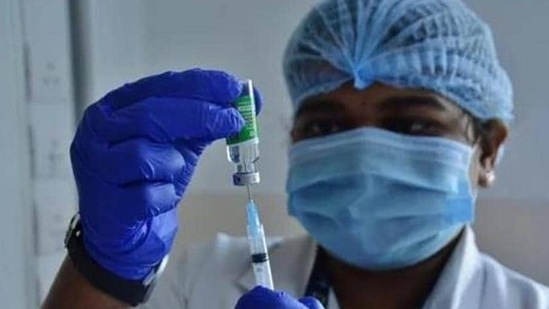Why India’s booster roll-out needs a boost
The proportion of those not turning up for the booster dose has also been increasing with each passing day. Compared to current 86.1 million or 75% of those eligible, those who missed their third shot numbered 48.3 million or 68% of those eligible on April 10, the first day all adults became eligible for it.
India’s Covid-19 vaccination programme seems to have run into a demand side problem — a far cry from its initial supply side issues. Data from the Co-Win dashboard shows that 86 million people eligible to receive booster (or precautionary) doses of their Covid-19 vaccine as of May 12 have not turned up to do so. The numbers look even worse in relative terms. Three in four persons (75%) who are now eligible for booster shots have given them a miss. What is even worse is that the share of eligible persons who have given their booster doses a miss has been increasing over time.

By August 11, 2021, 115.1 million people or 9.2% of all adults in India had taken their second dose, according to data from the Co-WIN dashboard; they were eligible for a booster on May 12 given the mandated nine-month gap. However, only 29 million people or 3.1% adults actually took the booster shot by the end of day. This means that 86.1 million people, or 75% of those eligible for a booster, have not yet taken the dose.
To be sure, some of them may have been infected by the Omicron strain of the virus, and the recommendation is that those testing positive wait for three months for a shot (although there is no scientific basis to this).
The proportion of those not turning up for the booster dose has also been increasing with each passing day. Compared to current 86.1 million or 75% of those eligible, those who missed their third shot numbered 48.3 million or 68% of those eligible on April 10, the first day all adults became eligible for it.
What explains this reluctance to take the booster dose? It could be a mix of various factors such as booster doses not being free in many states, vaccination centres being further away than they were for the first two doses, or the absence of a campaign on the importance of booster doses (hint: they are very important).
On January 9, the seven-day average of vaccination sites was at an all-time high: 102,670. This average has decreased to 44,598 by May 12. Private vaccination centres – where priced boosters are available – make up just around 3% of these vaccination sites currently.
These numbers also support the case for reducing the gap between the second dose and booster shot for Covid-19 vaccines. Demand has shown a spike around the dates that new groups became eligible. India started administering booster doses on January 10. At the time only health care and frontline workers, and those aged 60 years and above with co-morbidities were eligible. All senior citizens became eligible for boosters on March 16, and all adults became eligible for boosters on April 10. The seven-day average of daily booster administration was 0.62 million per day on January 16. This pace dropped to 0.08 million by March 15, but increased to 0.13 million by March 31. The most recent peak in daily booster administration came on May 1 – a seven-day average of 0.23 million – around three weeks after all adults became eligible. By May 13, this average was down again to 0.19 million.
While making boosters free for all or making them available at more places can help, reducing the nine-month gap will ensure those willing to take the shot but disallowed from doing so because of the rule will . For example, if all adults were allowed to take a booster three months after the second shot (this is allowed for those travelling abroad), 739.7 million people or 79% adults will be eligible for boosters on May 13, according to health ministry’s data on breakup of doses by age group. Even if only 25% of such eligible people took their third shot, as is the case currently, close to 20% of all adults will be covered by boosters, almost seven times the current coverage.
It’s important to do this before the next wave is upon us.
Get Current Updates on India News, Lok Sabha election 2024 live, Election 2024 along with Latest News and Top Headlines from India and around the world.
Continue reading with HT Premium Subscription





